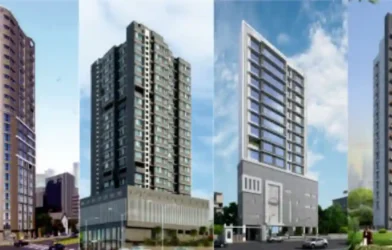Subtotal ₹0.00
The 2023 year end has brought a boon for the SEZ sector with the Central governmen issuing a notification of Rule 11B ,paving the way for floor-wise demarcation in the built-up area of an IT/ITeS SEZ as a Non-Processing Area (NPA), which may be used for setting up and operation of businesses engaged in IT/ITeS. While some developers have already denotified under-construction SEZs and SEZ land parcels, this recent amendment is more focused on converting existing vacancies in operational IT/ITeS SEZ office assets into ‘relevant space’ for IT/ITeS occupiers. This timely intervention aims to breathe new life into the fading attractiveness of IT/ITeS SEZs, transforming them into dynamic office hubs.
According to JLL,the sunset clause withdrew direct tax holidays for IT/ITeS SEZ units and post the withdrawal, significant compliance requirements without requisite financial benefits had a substantial impact on leasing activity in SEZ units. “As lease contracts expired, a sharp increase in occupier exits led to a surge in vacancy levels from 9.7% in December 2020 to 19.4% in September 2023. In contrast, the vacancy rate in high quality IT/ITeS office assets across India’s top seven markets of India stands at 13.7%, which provides a clear indication of the leasing potential once the SEZ spaces are denotified,” says Dr Samantak Das, Chief Economist and Head of Research and REIS, India, JLL.
JLL Research estimates that up to 50% of the vacant SEZ space, translating to 15-18 mn sq ft is now a prime candidate for denotification, given the limitations imposed by the amendment. These limiting factors include the requirement for the Processing Area to constitute at least 50% of total SEZ area, the minimum developed area norm of 50,000 sq m for Class A cities and the prohibition of part floor demarcation. Furthermore, the added cost to landlords in terms of repayment of benefits and the possibility of controlling access of SEZ spaces to people and goods will also have to be considered while evaluating denotification opportunities.
Importantly, this amendment will potentially inject relevant supply in core markets with maximum denotification and leasing opportunities arising in the following submarkets:
| City | Submarket | ||
| Bengaluru | ORR North, PBD North | ||
| Chennai | SBD OMR | ||
| Delhi NCR | Prime NH-8, Sohna Road | ||
| Chennai | SBD, OMR | ||
| Hyderabad | Gachibowli | ||
| Pune | Kharadi, Hinjewadi |
“The denotification amendment presents opportunities for both landlords and occupiers. Landlords can leverage this process to offer quality space to a broader group of IT/ITeS occupiers, potentially reviving rental growth for denotified SEZ spaces. For occupiers, this opens access to new and relevant supply in core markets. SEZ projects by virtue of their size, enable scalability and consolidation options, enhancing operational efficiency. Additionally, the rebalancing of demand in key markets with the introduction of denotified SEZ supply is expected to provide negotiation headroom to occupiers,” says Rahul Arora, Head – Office Leasing Advisory, India, JLL.
A detailed notification is anticipated early 2024 (the next 4-6 weeks) to provide additional clarity on the approval process, built up area calculation, refund of taxes and duties against denotified spaces and other operational aspects. JLL estimates that the full denotification process, including a single or double window clearance cycle (Board of Approvals + Central Government), could take anywhere between 6 to 10 months from the current period.














